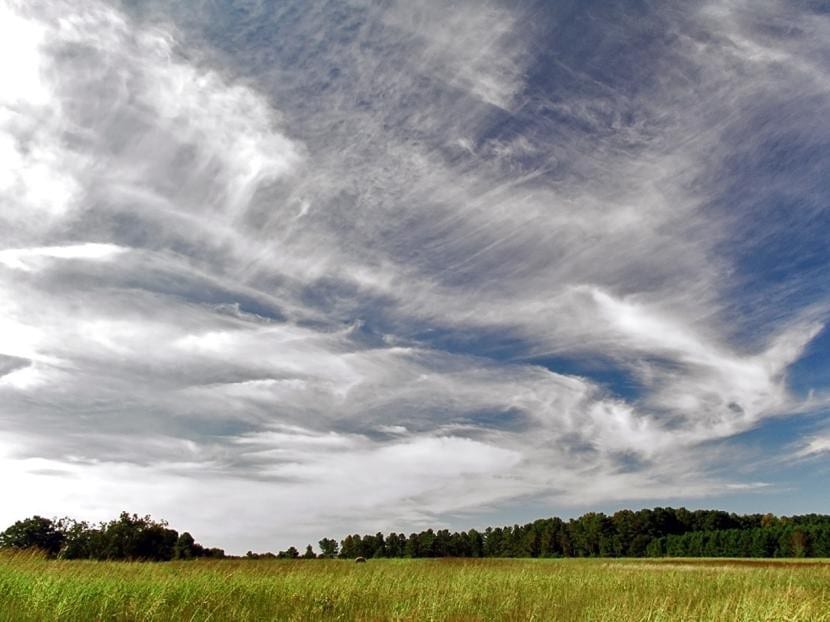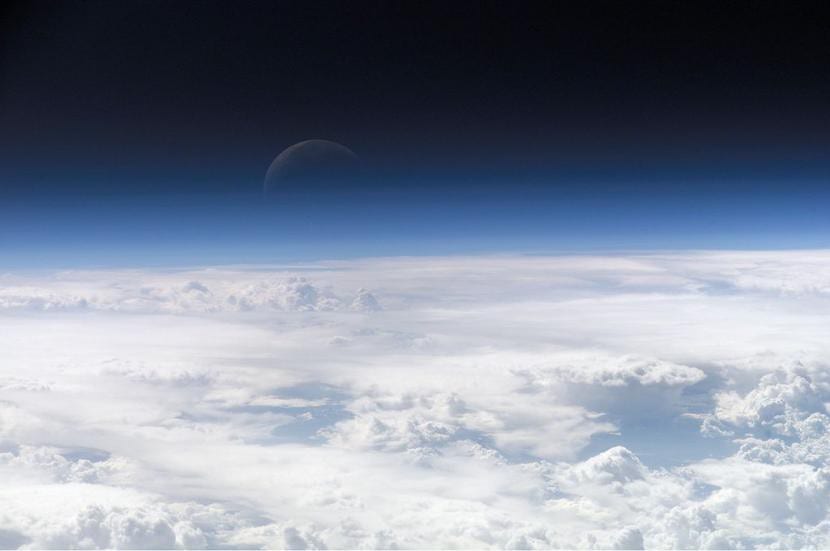
If a planet is too far or too close to the Sun, it is very difficult for it to have an atmosphere thick enough to support life. The one that surrounds the Earth, our home, is a gaseous layer who has allowed that to happen. So far, no other planet has been found that can "boast" of having inhabitants living within it.
But What is the composition of the earth's atmosphere and why is it so important?
Composition of the Earth's atmosphere

The gaseous composition of the atmosphere has gradually changed over millions of years as Earth's geography has evolved. At present, three gases, nitrogen, oxygen and argon, constitute 99,95% of the atmospheric volume; of these, nitrogen and argon are geochemically inert and once released into the atmosphere they remain there; oxygen, on the other hand, is very active and its quantity is determined by the speed of the reactions that link the atmospheric deposit of free oxygen with the reducing deposit that exists in sedimentary rocks.
The remaining components of air are present in such small amounts that their concentrations are generally expressed in parts per million by volume. They are as follows:
- Neon: 20,2
- Helio: 4,0
- Methane: 16,0
- Krypton: 83,8
- Hydrogen: 2,0
- Xenon: 131,3
- Ozone: 48,0
- Iodine: 126,9
- Radon: 222,0
- Carbon dioxide: 44
- Water steam: 18
These gases appear in substantially constant proportions up to altitudes close to 80 km, which is why they are called permanent. However, the essential role in weather phenomena falls on variable gases, in particular water vapor, carbon dioxide, ozone and aerosols.
Water steam

Water vapor is the gas that forms when water goes from a liquid to a gaseous state. It is the primary element of most of the meteorological processes, effective heat transport agent and thermal regulator.
Carbon dioxide
It is a colorless, odorless gas that is vital for there to be life on Earth, since it is the main responsible for the so-called Greenhouse. Currently, an increase in the emissions of this gas is causing an increase in temperatures.
Ozone
This is the only atmospheric gas that absorbs almost all solar ultraviolet radiation and therefore constitutes a protective envelope without which life on the planet would be destroyed.
aerosols
They have a significant influence on the transparency of the air and perform functions that are decisive for the climate, basically by acting as condensation nuclei from which clouds and fogs are formed, although they are sometimes the cause of serious levels of air pollution when their concentration is high.
Layers of the Earth's atmosphere

Earth's atmosphere is divided into five layers. It is denser on the surface, but its density decreases with height until it finally fades into space.
- Troposphere: It is the first layer and it is where we find ourselves. It is also where the weather happens. It is located at ground level up to 10km of altitude.
- Stratosphere: If you've ever flown a jet plane, you've made it this far. The ozone layer will also be found in this layer. It is situated between 10km and 50km in altitude.
- Mesosphere: which is where meteorites "burn" and destroy themselves. It is situated between 50 and 80km of altitude.
- Thermosphere: where the splendid northern lights are formed. It is also where spaceships orbit. It is located between 80 and 500km of altitude.
- Exosphere: which is the outermost and least dense layer that ends up mixing with the outer space. It is located between 500 and 10.000 km of altitude approximately.
Atmosphere and global warming

Since the Industrial Revolution, humanity has steadily increased emissions of greenhouse gases and other pollutants into the atmosphere, which has caused the global average temperature to rise 0'6ºC. It may seem little, but the reality is that it is enough to favor the formation of increasingly powerful meteorological phenomena, whether they are hurricanes, tornadoes or droughts.
But why is this seemingly insignificant increase affecting life on Earth so much? Well, global warming is causing the seas to heat up, and in the meantime to acidify. Warmer oceans could "feed" devastating hurricanes. Also, the ice in the polar regions is melting. That melting ice has to go somewhere, and of course it goes to the sea, causing an increase in its level.
Unless measures are taken to reduce the emissions of polluting gases, to by the end of the century the temperature could rise 2 degrees, As minimum.
So, we hope that it has been useful to you and that it will be easier for you from now on to recognize the different layers, as well as the composition of the Earth's atmosphere and the important role they play in providing life on this little blue planet.
what is the composition of the terrestrial atmosphere
It is amazing to know the composition of the atmosphere, it is really fascinating how the perfect "recipe" for the gases that make life on earth possible is thanks to a much superior intelligence
An element that has to be measured in parts per million, which is not the most relevant of these gases (Radon is above CO2, among others), does NOT determine climate change. These are natural cycles of the earth in which there have been warmer cycles than the one that is occurring.
What is the mechanism by which CO2 performs the greenhouse effect?